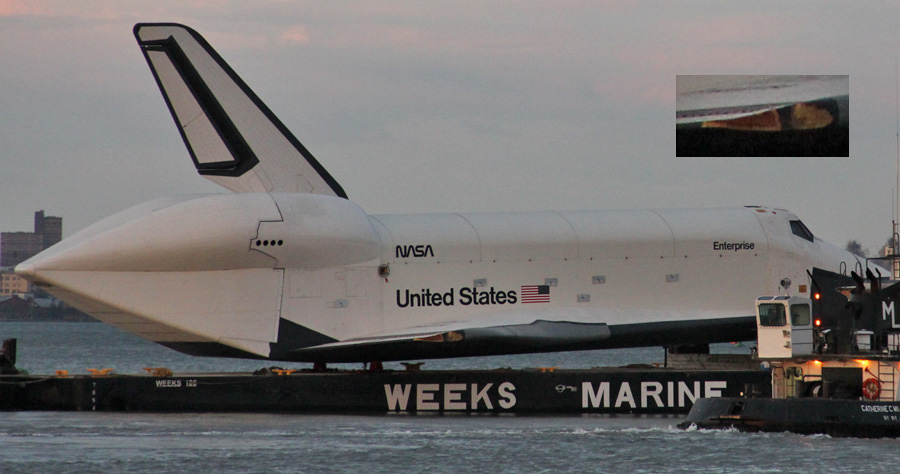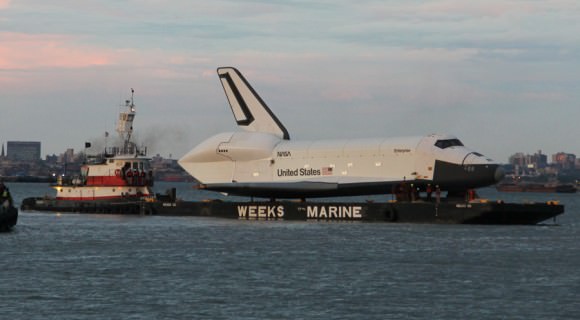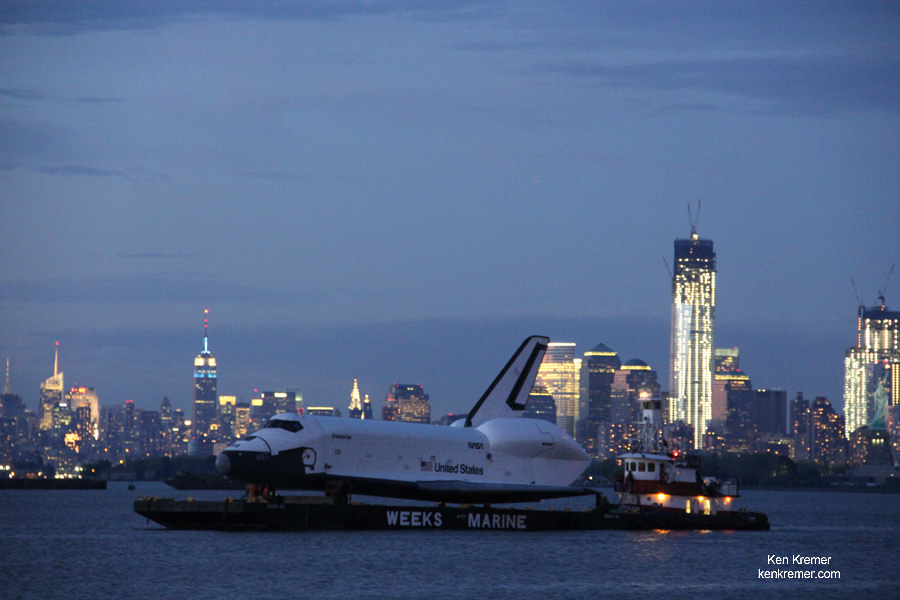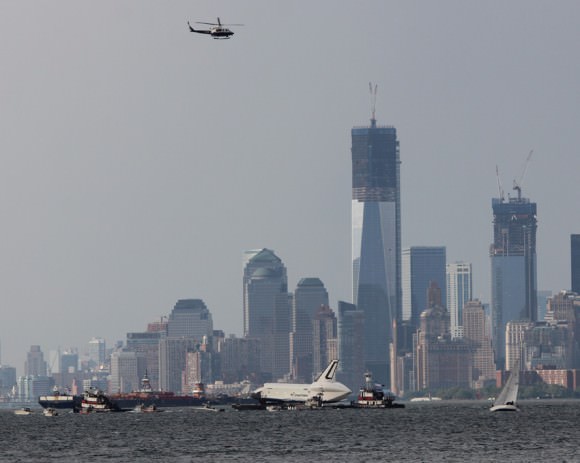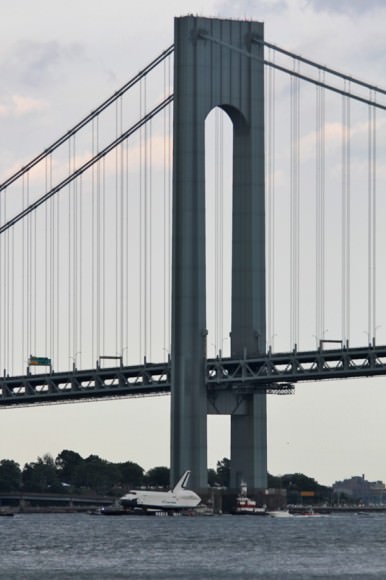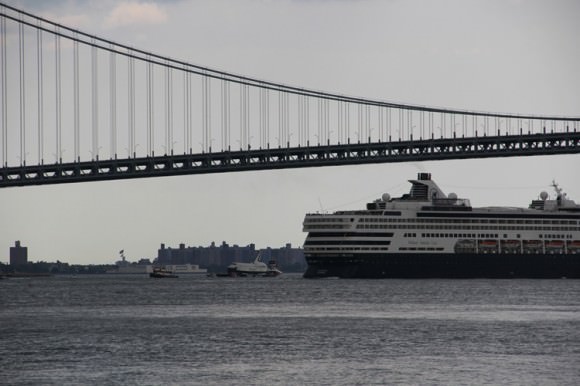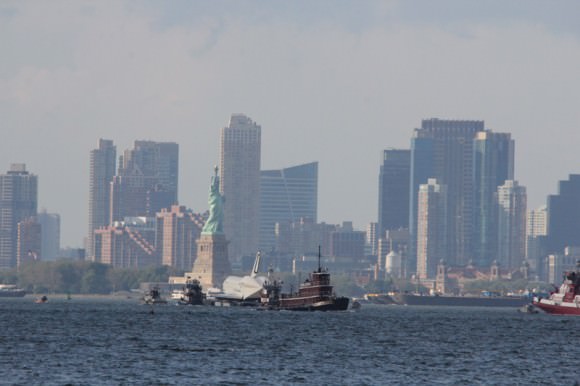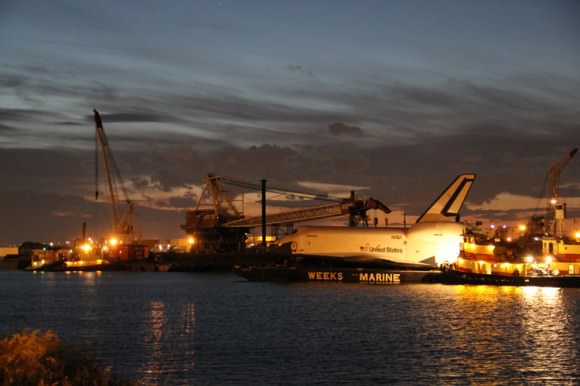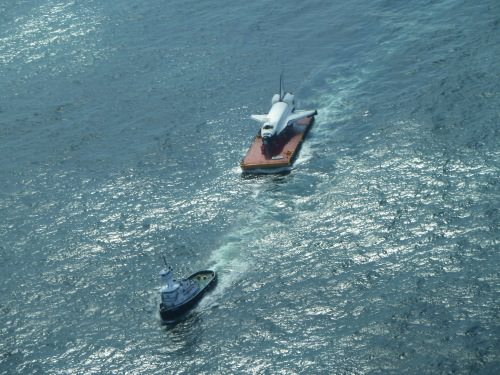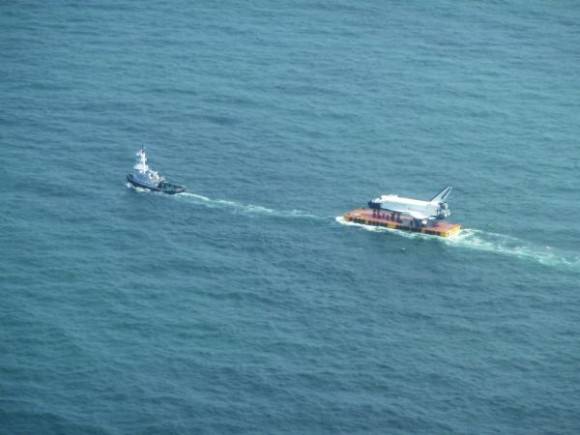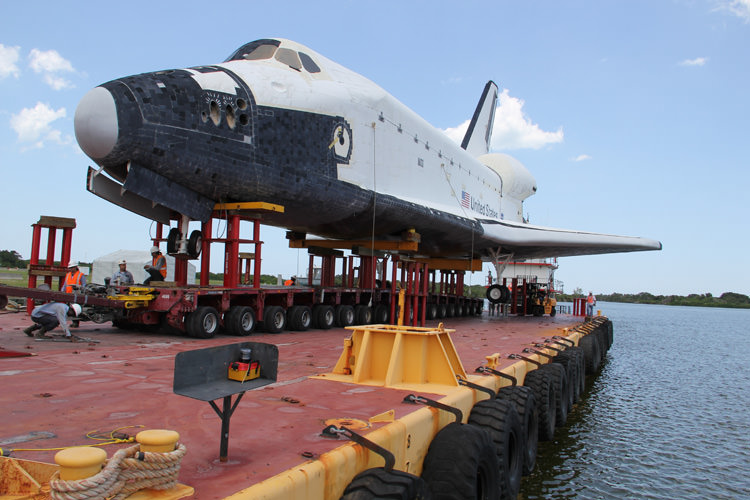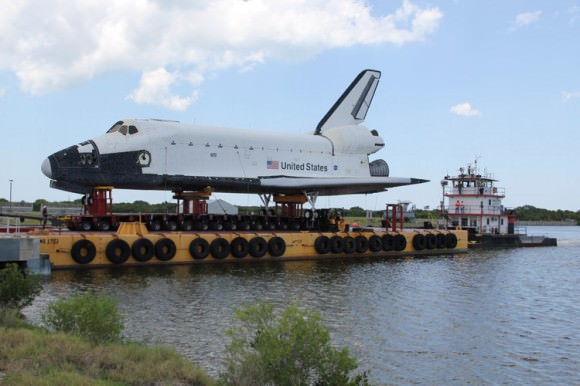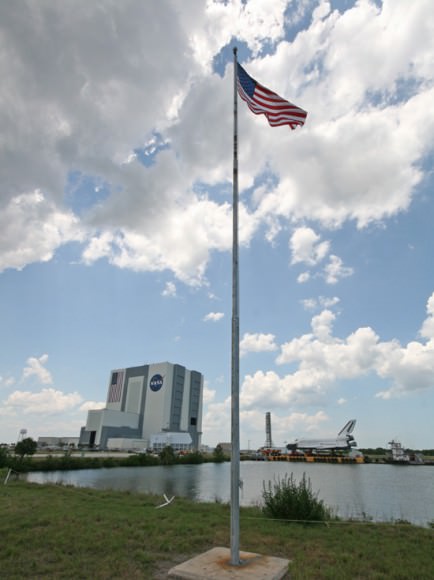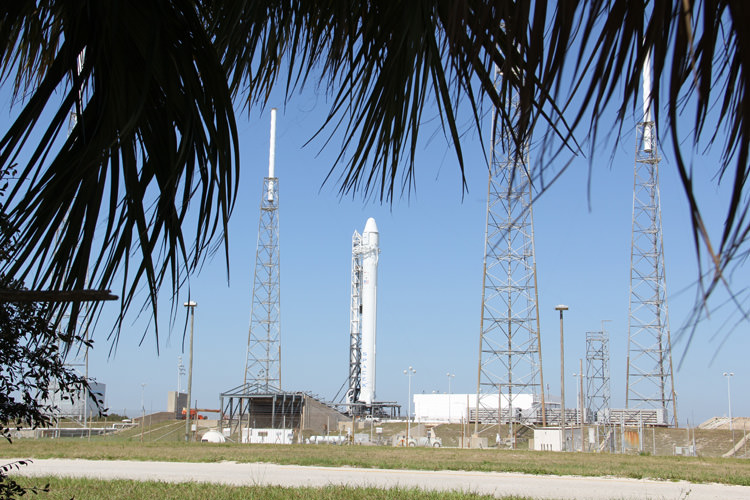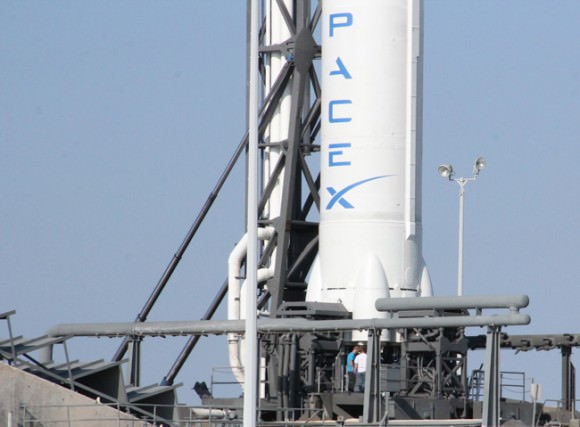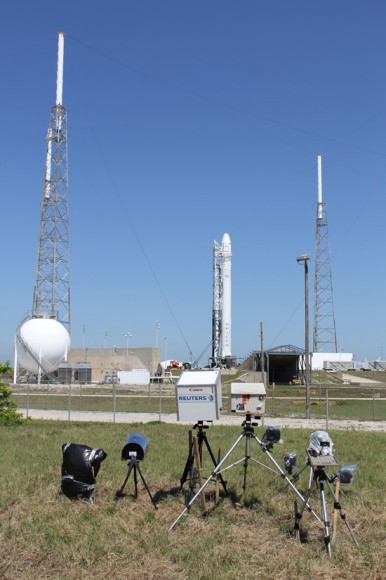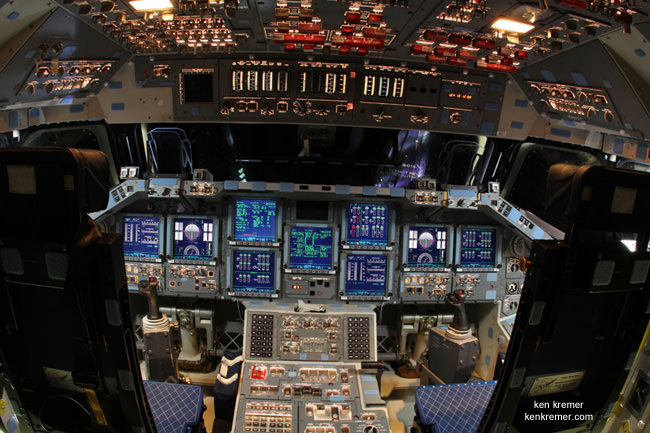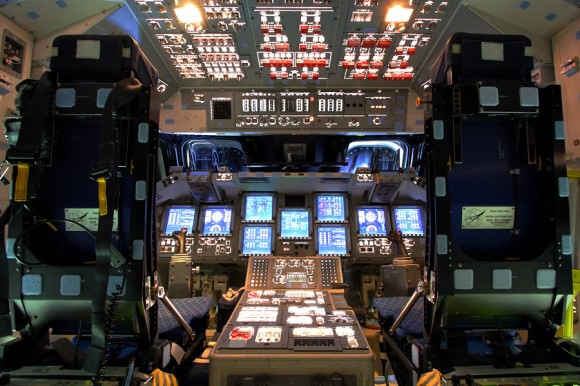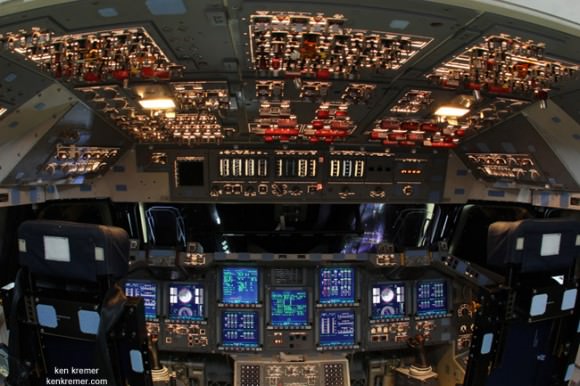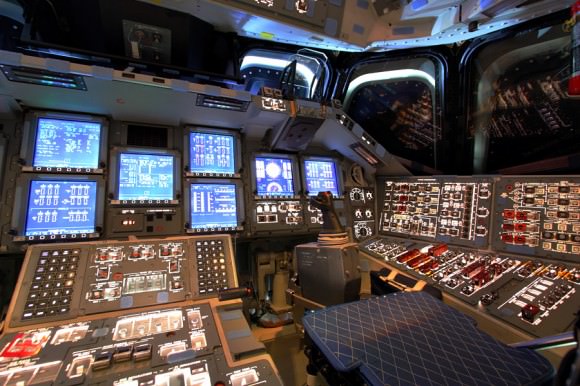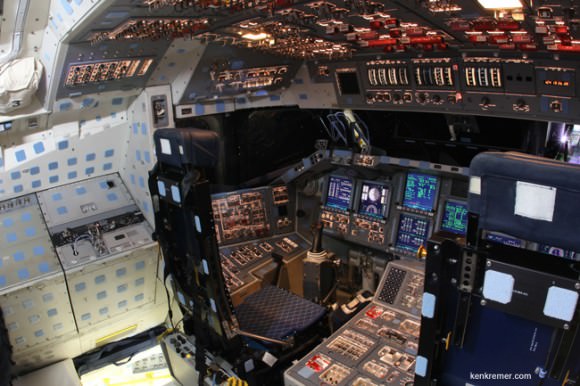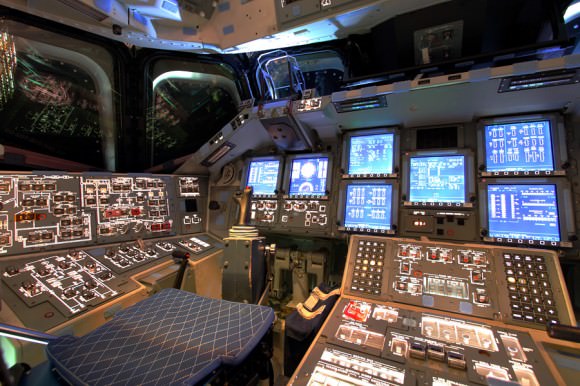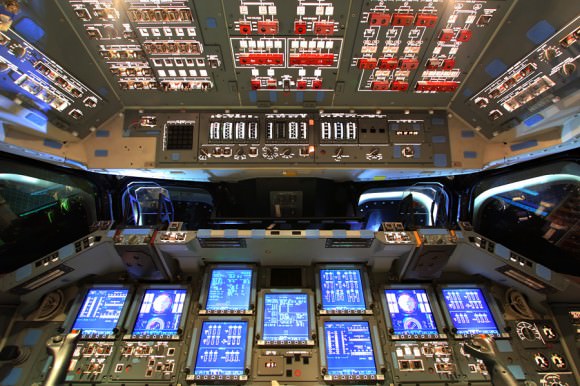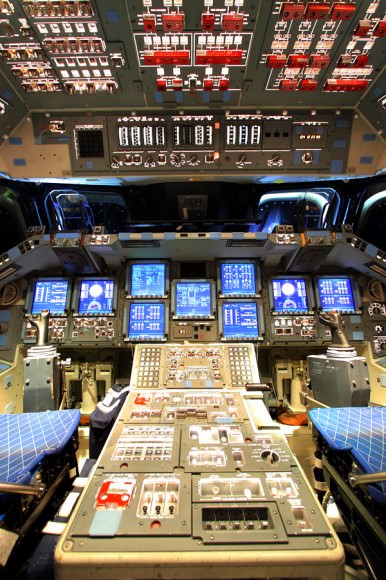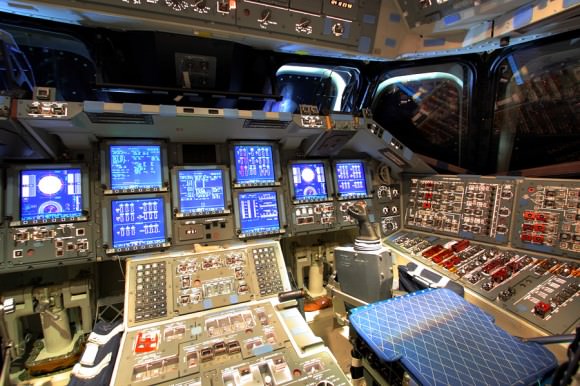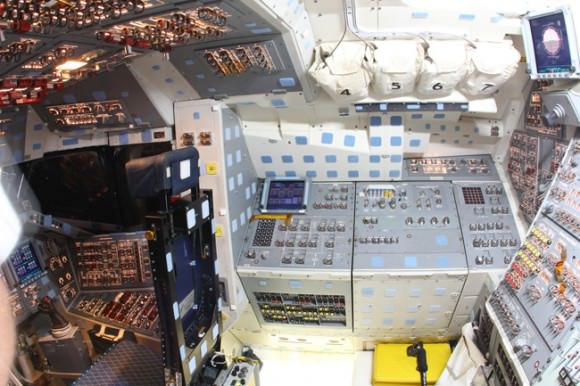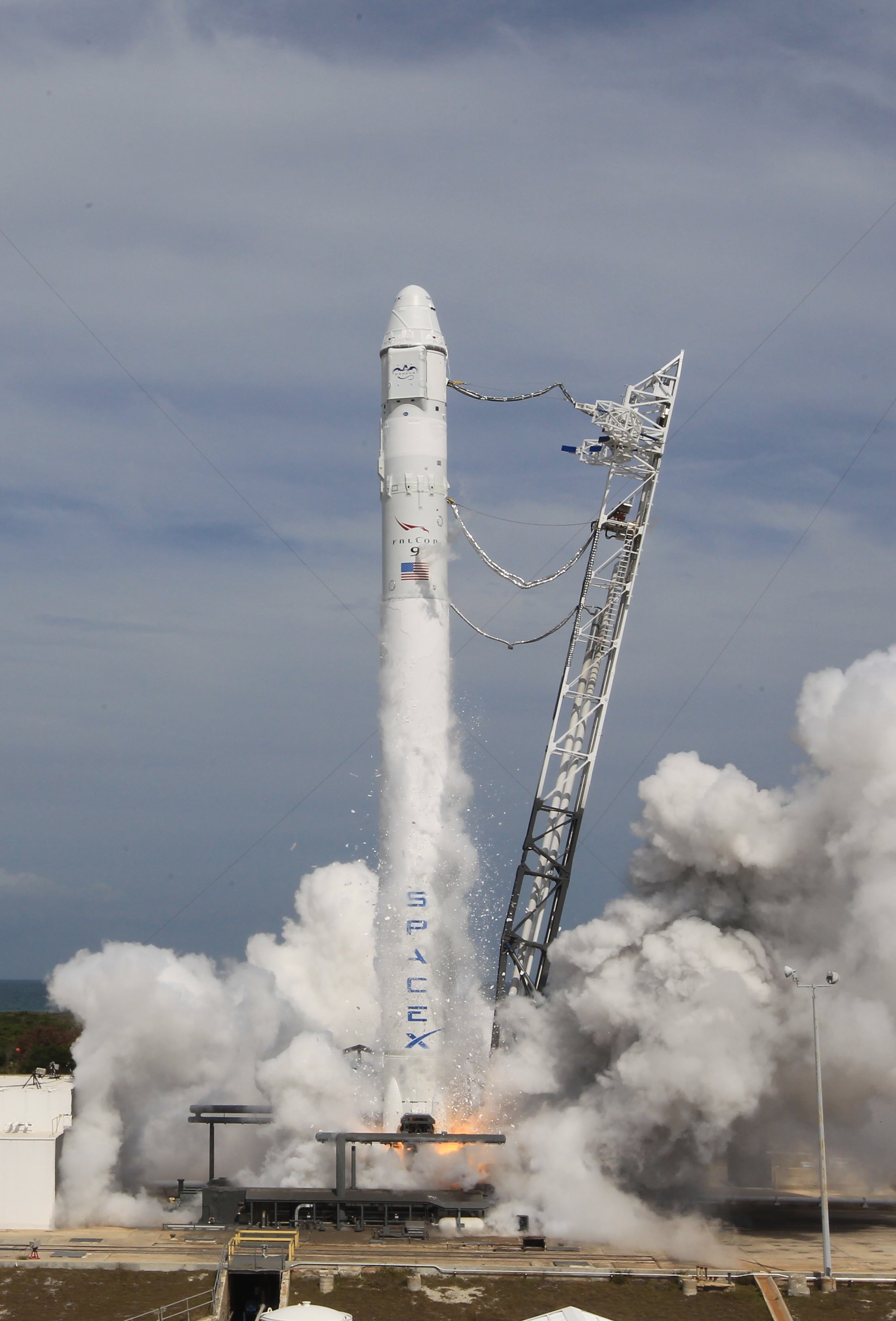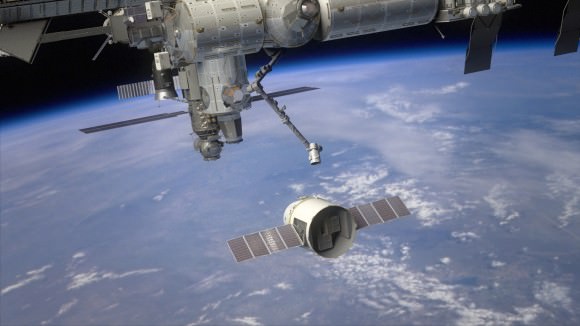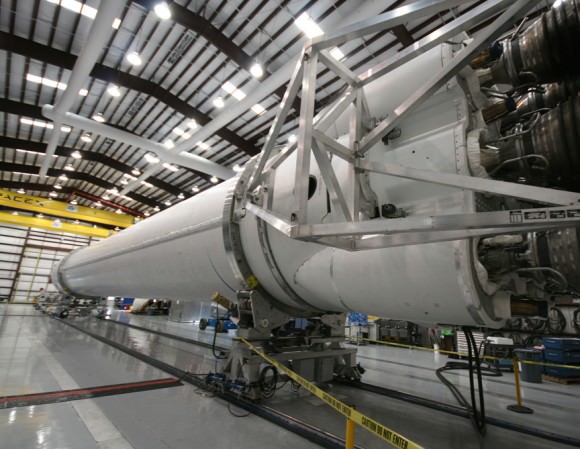[/caption]
NASA’s Space Shuttle Enterprise magnificently completed her final mission by making a historic landing on the deck of a retired aircraft carrier berthed in Manhattan- the Intrepid – as the first and only space shuttle to ever do so on a once-in-history spectacle befitting the Big Apple.
But instead of a piloted landing by air, Enterprise arrived afloat, atop a seagoing barge and was then hoisted and gently lowered for touch down on top of the Intrepid’s flight deck by a humongous seagoing crane accompanying the shuttle on a second barge at 4 p.m. EDT on Wednesday, June 6.
The Intrepid Sea, Air and Space Museum is the permanent new home of the Enterprise, NASA’s prototype shuttle – built in 1976 – that was used for a series of critical atmospheric approach and landing tests in the late 1970’s and that paved the way for building all the five shuttle orbiters that followed and the first launch by the Columbia in April 1981.
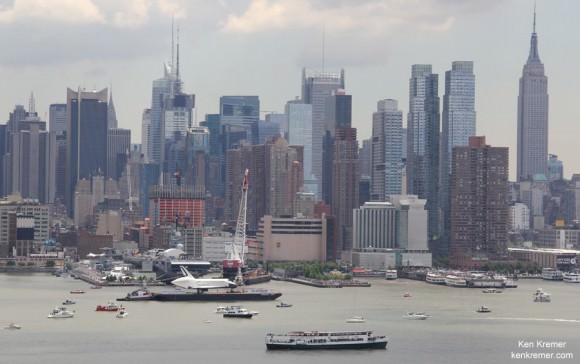
Enterprise embarked on a long and winding road to reach the Intrepid which I witnessed at points along the way. First she flew piggyback on top of NASA’s specially modified 747 Jumbo Jet from Dulles International Airport for a triumphant fly over tour of the New York Metropolitan region on April 27 before touching down at John F. Kennedy (JFK) International Airport.
Enterprise had been on public display at the Smithsonian’s National Air & Space Museum Annex in Virginia since 2003.
Then the shuttle took a two day cruise on June 3 and June 6, towed by a tugboat; departing from JFK on June 3 and voyaging through New York Harbor to the Statue of Liberty before making an intermediate stop at a port in Bayonne, New Jersey to switch to another larger barge. Along the way the orbiter suffered some minor damage to the right wing tip when wind gusts caused her to scrape against a railroad bridge.
After a 24 hour postponement due to poor weather, a repaired shuttle Enterprise at last put out to sea again on Wednesday morning, June 6, at about 9:45 a.m. for the very last time on the final leg of her thrilling final voyage.
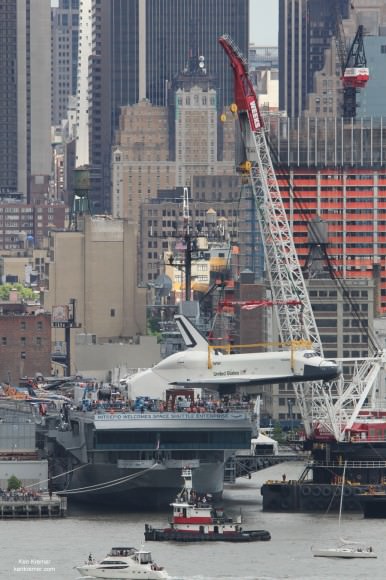
Enterprise took one last beauty ride past the Statue of Liberty, Ground Zero and the Freedom Tower before sailing North up the Hudson River and past the Empire State Building on Manhattan’s West Side; enjoyed by throngs of onlookers and space enthusiasts lining the shores of New York and New Jersey.
She arrived at the Intrepid, located at Pier 86 at 46th Street and 12th Avenue, at about 1 p.m. accompanied by a flotillia of police and water spraying fire boats, ferries , sailboats and pleasure craft.
The giant lifting crane was maneuvered into position in between the Intrepid and Enterprise.
Over the next three hours, technicians carefully attached a yellow steel harness sling to the 150,000 pound orbiter at four points, two in the front and two in the rear. This was the same sling used to lift Enterprise onto and off the back of the 747 jet.
The 240 foot crane used to hoist Enterprise is the same one used to lift the US Airways jet piloted by hero captain Chesley “Sully” Sullenberger out of the Hudson after an emergency water landing near the same exact spot in January 2009 – where all the passengers and crew on board miraculously survived.
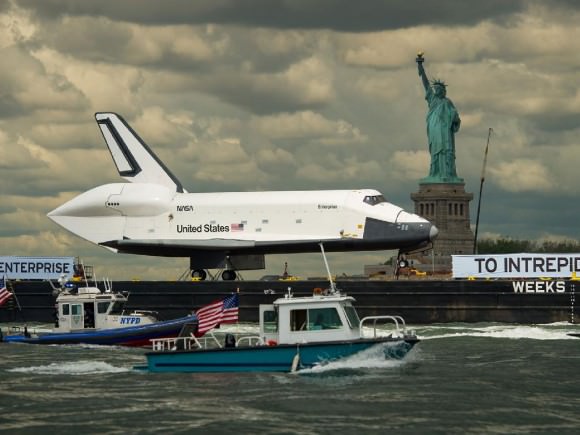
The dramatic pluck of the 75 ton Enterprise off the Weeks Marine barge started around 3:45 p.m. as the winds were gently gusting. Enterprise was raised some 75 feet and rotated nearly 180 degrees so her nose faced directly towards the Hudson River and the beautiful city and cliffs of Weehauken, in Hudson County, New Jersey, where I was watching and photographing from. Enterprise came to rest with wheels down around 4:02 p.m., pretty much exactly on time.
Finally the yellow sling was detached around 6 p.m. and Enterprise was dramatically exposed on the deck of the Intrepid in a beautiful sight for all to see.
But that gorgeous deck view didn’t last long because the museum quickly covered Enterprise with an inflatable pavilion to protect the delicate and precious orbiter from the weather and flying debris – and gawkers looking for free.
To see the Enterprise in all her glory now, you’ll have to pay $22 for admission to the museum and an extra $6 for the shuttle – or check my deck top photo below.
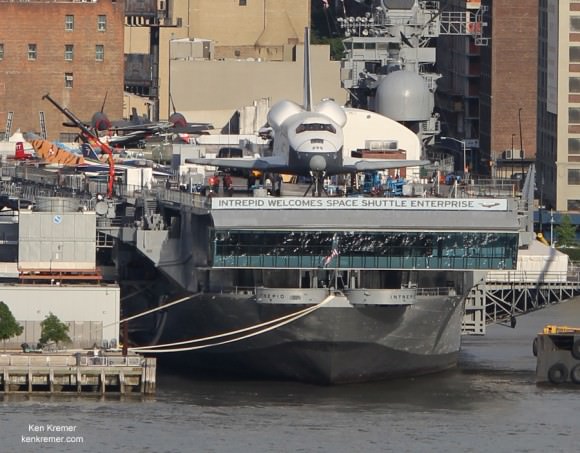
The museum is hastily constructing a temporary, climate controlled “Space Shuttle Pavilion” to house Enterprise. She will be open for public display starting on July 19.
Enterprise is named after the fictional starship in the world renowned and beloved TV science fiction series – “Star Trek”.


